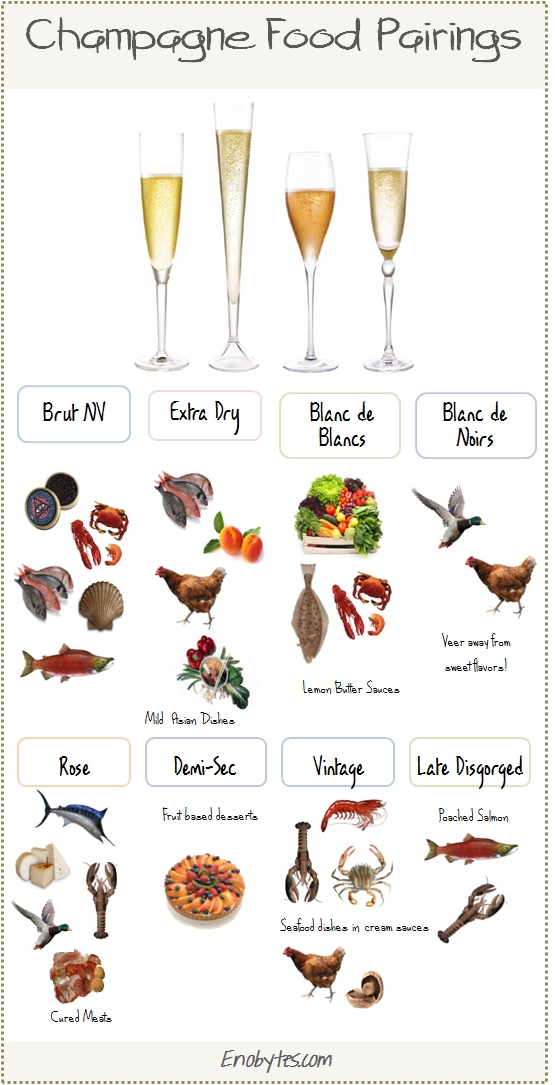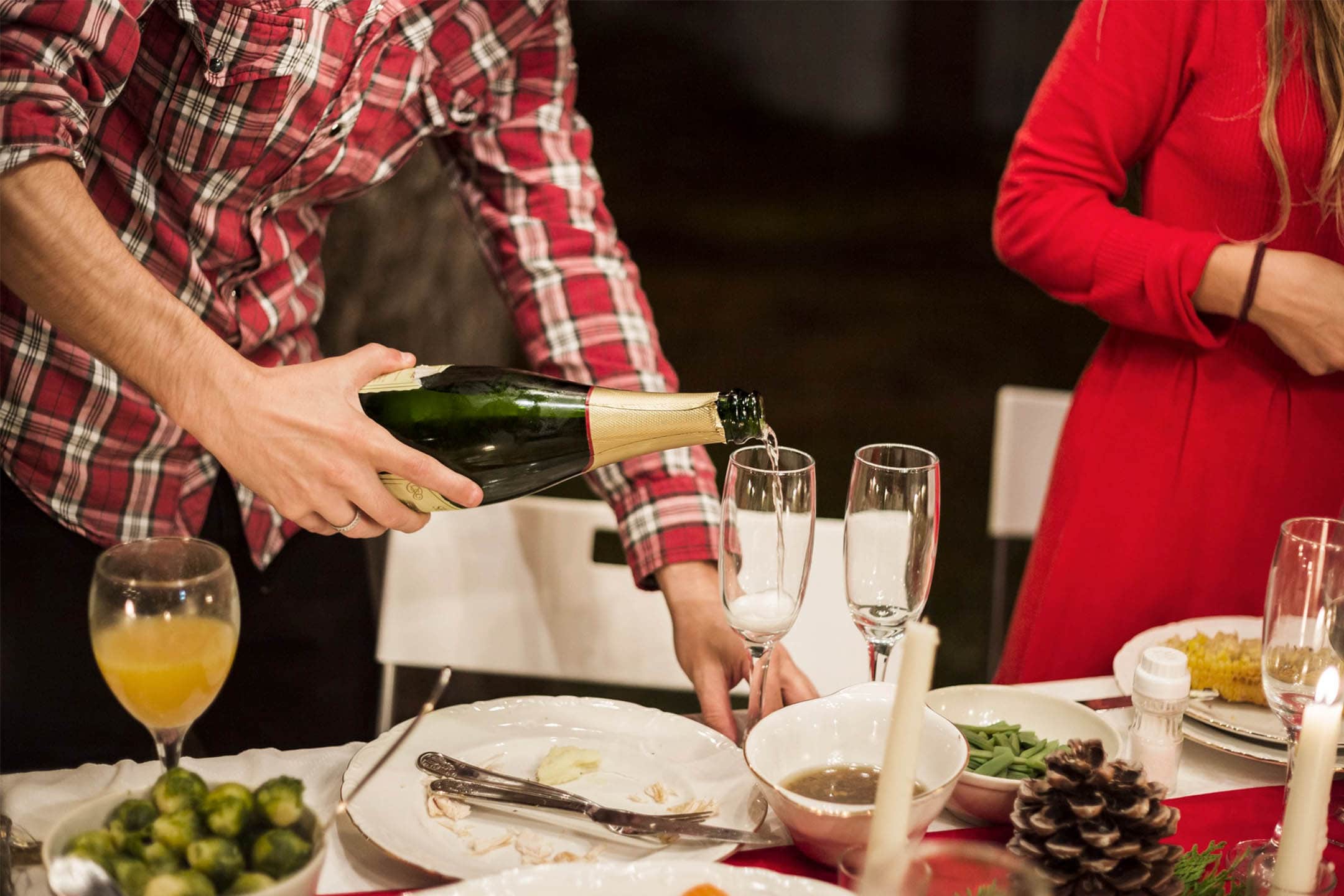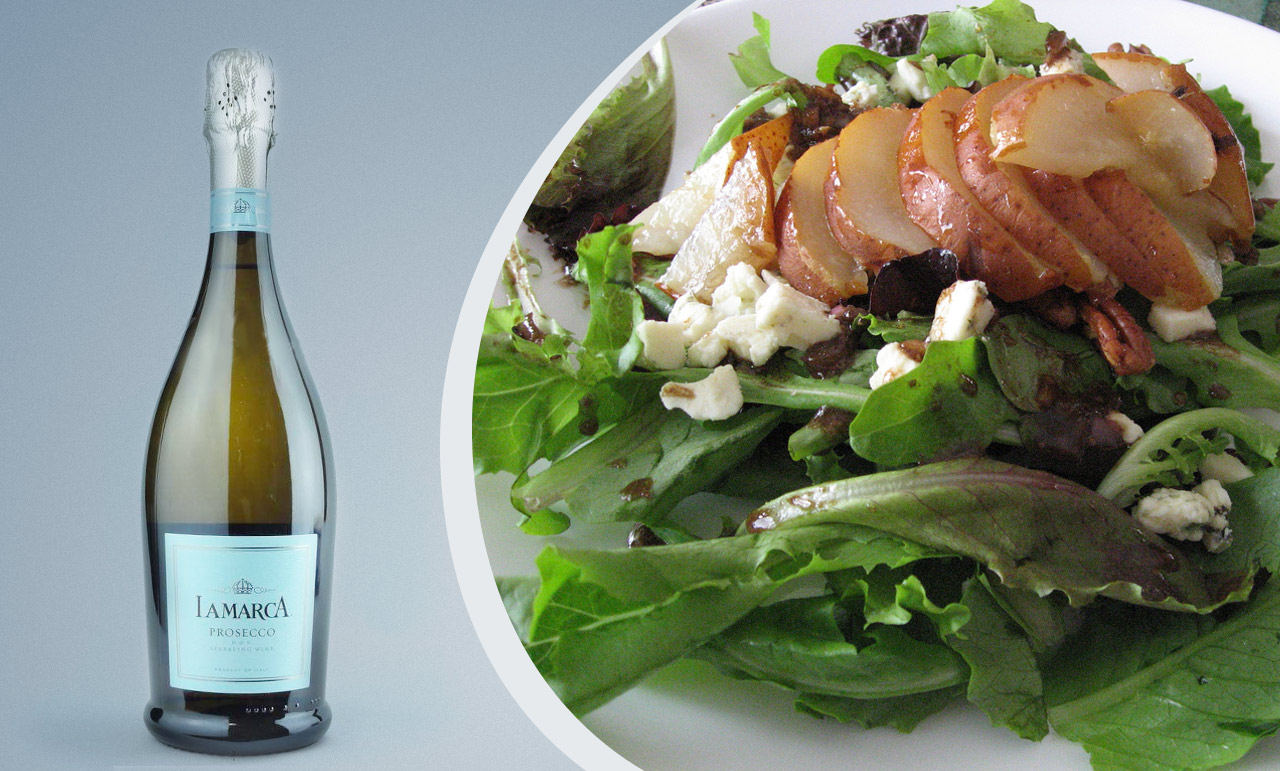Champagne transforms any dining experience when matched thoughtfully—its vibrant acidity, fizzy effervescence, and nuanced sweetness cut through rich flavors perfectly. These qualities elevate everything from salty oysters to crispy fried chicken or sweet desserts, keeping each bite feeling fresh and exciting.
Understanding Champagne Styles for Food Pairing
The crisp blanc de blancs offers citrusy mineral notes that beautifully complement oysters, sushi, and soft creamy cheeses, while the more robust blanc de noirs adds dark fruit and spice to grilled salmon, roasted meats, or earthy mushroom dishes. For seafood platters and Brie, classic brut works wonders, and rosé brings berry notes that enhance charcuterie or steak. Meanwhile, extra brut champagne, sec, or demi-sec options perfectly accompany mildly spicy food or fruit-based desserts, as long as the style of champagne aligns with the dish’s richness and acidity. Discover the perfect champagne pairings.
Match Intensity and Texture for Harmony
Crisp blanc de blancs champagne or ultra-dry brut nature shines with oysters, scallops, or sashimi—the wine’s bright acidity enhances briny seafood flavors without overpowering delicate textures. Meanwhile, aged vintage bottles or noir-based blends stand up well to roasted meats, nutty cheeses, and rib-eye steaks, delivering body and umami depth to balance heartier dishes.
- Delicate dishes call for subtle wines: Serve sharp brut nature or blanc de blancs with ceviche, poached white fish, or tender scallops. The wine’s crisp acidity mirrors the seafood’s freshness.
- Rich foods love full-bodied champagnes: Try butter-poached lobster, game meats, or nutty Comté cheese with vintage bottles or blanc de noirs, whose toasty richness complements powerful meats.
- Texture plays a key role: Champagne’s bubbles love crunch, so pair them with potato chips, fried arancini, tempura, or golden chicken—the effervescence cleanses the palate between bites.
The brioche-like notes in mature champagne work beautifully with roasted chicken skin, truffle-infused dishes, soy-glazed fish, and aged nutty cheese, adding savory richness to each bite. For a balanced tasting experience, start with the driest style of champagne before moving to richer, sweeter expressions to maintain harmony in every pairing.
Choose Brut, Rosé or Demi-Sec Based on Sweetness
Versatile brut works beautifully with seafood, fried foods, roasted poultry, and cheese boards, while bone-dry extra brut champagne or brut nature accentuates oysters, caviar, and other briny dishes. Slightly sweet sec or Extra Dry options bridge the gap with spicy Asian fare, brunch pastries, or roasted vegetables, ensuring a cohesive and refreshing pair.
Rosé champagnes burst with vibrant red fruit flavors and a robust structure that beautifully complements salmon, seared tuna, roasted duck, cured meats, or tangy tomato-based dishes. The softly sweet sec or luxuriously rounded demi-sec styles wonderfully balance the heat in spicy Thai curries, enhance bold blue cheeses, and elevate fruit-focused desserts to new heights.
As a golden rule, pair champagne with food that isn’t sweeter than your brut selection – opt for sec or demi-sec when matching sugary dishes. When serving ultra-briny delicacies like fresh oysters, reach for brut nature or extra brut styles to let the wine’s mineral qualities shine without sugar competing with this delicate pairing.
Seafood and shellfish pairing strategies
Champagne’s effervescence creates magic with briny oysters and delicate sushi – its bright acidity cuts through richness while refreshing your palate. Understanding how different styles complement various dishes helps you craft those magical perfect pairing moments that feel effortlessly elegant.
Raw oysters meet blanc de blancs
In the best Champagne bars and Parisian bistros, you’ll often find pristine blanc de blancs or bone-dry brut nature perfectly complementing fresh oysters, with their mineral qualities echoing the shellfish’s briny character. When serving premium caviar, select wines with energetic bubbles and crisp acidity, while salty potato chips provide a delightful textural contrast to the pairing.
- Shellfish matches: Delicate clams and raw fish preparations find their ideal partner in mineral-driven blanc de blancs, while richer lobster benefits from fuller-bodied, sometimes oak-aged Chardonnay cuvées.
- Caviar and luxury: The citrus and white fruit notes in blanc de blancs mirror caviar’s salty richness, creating harmony without overwhelming this luxurious dish.
- Scallops and shrimp: Perfectly seared scallops or plump prawns come alive with non-vintage brut champagne, where crisp minerality balances their natural sweetness and ties together diverse seafood flavors.
Brut champagne remains the classic choice for salty starters like oysters, smoked salmon, or charcuterie – its lively bubbles refresh the palate while enhancing each ingredient’s subtle flavors. Consider matching the wine’s intensity to your food, selecting lighter styles for delicate seafood and richer cuvées for heartier dishes, treating the champagne like a flavorful sauce that elevates every bite. Discover expert champagne pairing tips
Rich seafood and rosé champagne
The berry complexity and structured body of rosé champagne make it ideal for richer seafood like salmon, grilled jumbo shrimp, or spiced crab cakes – its vibrant acidity stands up to bold flavors while maintaining elegance. For a truly stunning combination, try rosé with seared tuna where color, texture, and flavor create a memorable marriage.
Smoked salmon canapés adore the subtle sweetness of sec varieties, though classic brut also performs beautifully. For mixed seafood platters, you can’t go wrong with non-vintage brut or mineral-forward blanc de blancs – proving that champagne effortlessly pairs with food across the entire seafood spectrum, from oysters to lobster.
Cheese, Poultry and Meat Pairings
Champagne’s remarkable versatility allows it to complement everything from delicate seafood to robust meats. By matching the wine’s body and bright acidity to your dish‘s richness and flavor, every meal becomes a special occasion.
Cheese Board Essentials
For soft, buttery cheeses like Brie, opt for crisp Brut or refined blanc de blancs – their minerality creates perfect harmony with creamy textures. When serving pungent blue cheese, choose demi-sec or sec styles whose subtle sweetness balances the cheese’s bold saltiness.
Hard, aged cheeses such as Parmesan call for bone-dry varieties that cut through richness with their sharp acidity. Goat cheese with honey finds its match in blanc de noirs, where the wine’s robust body and fruity notes create a memorable pairing.
Poultry from Classic to Rich
Traditional roast chicken pairs wonderfully with standard Brut, while herbed turkey or duck breast comes alive when matched with rosé Champagne’s berry characteristics. For fried chicken, extra Brut works magic – its bubbles cleanse the palate between crispy bites.
Slow-cooked duck and game birds deserve special attention: try them with aged Brut or complex blanc de noirs. These wines’developed flavors complement the meats without overpowering them, creating a satisfying culinary duo.
Red Meat and Richer Dishes
Surprise your guests by serving rosé Champagne with grilled burgers or barbecue – the wine’s fruitiness contrasts beautifully with charred flavors, while its acidity keeps things fresh. When pairing with fruit-glazed pork, a demi-sec maintains perfect balance.
Even comfort dishes like macaroni and cheese find their Champagne match. The wine’s toasty notes echo golden crusts, while its acidity cuts through richness, proving that Champagne belongs at every meal – not just celebrations.
Desserts and sweet pairings
Dry champagne and other sparkling varieties create perfect matches for chocolate treats like truffles or pralines. Their vibrant bubbles and crisp acidity cut through the richness of cocoa butter, making every layer of sweetness, nuts or caramel shine. For fruit-filled chocolates, a rosé champagne adds delicate berry notes, while demi-sec styles complement white chocolate beautifully. This careful pairing of champagne with food creates a harmonious balance between dessert and drink. Discover perfect champagne and chocolate pairings
Fruit-based desserts
Demi-sec works wonders with lemon meringue or berry tarts, offering enough sweetness to match without overpowering. The citrusy blanc de blancs enhances fresh strawberries and cream, while noir-based champagnes add depth to chocolate desserts like tiramisu or brownies.
For desserts featuring nuts or dried fruit, try a rosé champagne for its floral hints, or an extra-brut style with toasty notes that complement spiced pear treats. With dark chocolate cake, opt for noir champagnes whose richness pairs perfectly with intense cocoa flavors.
Creamy and rich desserts
Demi-sec champagnes elevate creamy desserts like panna cotta or cheese plates, while also working surprisingly well with savory dishes like glazed ham. The sweetest style, doux, makes an ideal pair for chocolate mousse or caramel desserts.
On the other hand, brut champagne’s crispness balances rich vanilla custards or creamy berry-topped desserts. For successful wine pairings, always align your champagne’s sweetness level – whether brut, sec, or demi-sec – with your dish when pairing champagne with food.
Practical serving and preservation tips
Serving different champagne styles during a single meal requires careful temperature management and reliable preservation equipment. The proper setup allows staff to serve chilled Blanc de Blancs with oysters, lively rosé with charcuterie boards, and find the perfect pairing for desserts – all while preserving optimal flavor and minimizing waste.
Serve multiple styles by the glass
Glass-by-glass service maintains opened bottles’freshness for over a week, giving guests freedom to experiment with different dishes and wines. The TempTour cooling system keeps bottles at approximately 10°C for 5-6 hours, using Smart Cap gas injectors to preserve Blanc de Blancs, rosé, demi-sec or sec – ideal for confidently matching with appetizers or sweet courses.
A standard 750ml bottle pours 5-6 glasses, meaning plan for 2-3 bottles per guest when champagne takes center stage. Most styles shine between 7°C-10°C in tulip or white wine glasses; slightly warmer temperatures better suit sweeter varieties when pairing with spicy food or dessert.
Maintain bubbles and flavor integrity
Store bottles upright below 10°C to preserve both bubble structure and flavor profile throughout service. This simple practice enables seamless presentation of contrasting styles – Blanc de Blancs with oysters, rosé with charcuterie, or sec with rich desserts – while efficiently rotating inventory.
Typically a five-second gas injection protects a bottle, though nearly empty ones might need a second burst to safeguard the final servings. Each gas cartridge covers about twenty-five pours, helping staff track preservation timelines during tastings, pop-ups, or multi-course events.
Equipment for reliable food pairing
Clean Smart Cap components after each use and operate triggers gently to ensure longevity and hygiene. The portable cooling unit maintains consistent temperatures for extended periods – particularly valuable when precision matters, like with the classic champagne and oysters pairing or any seafood dish.
This versatile system accommodates other sparkling wines too: match Cava with tapas, serve Prosecco with antipasti, or pair Franciacorta with seafood – all while keeping flavors vibrant for days. Universal stoppers fit standard and magnum bottles, allowing venues to offer diverse menus without equipment changes.
Select refillable canisters for high-volume bars or disposable capsules for temporary events; both options guarantee each preserved champagne remains flawless from first pour to last. The sleek TempTour design and Bubbl. guns create an impressive display at trade shows, tasting venues, or any food-centric gathering.
Creative and unexpected pairings
While oysters and caviar are classic matches, champagne’s versatility makes it perfect for everything from comforting home-cooked meals to sophisticated brunches. Its crisp acidity, subtle sweetness, and effervescent bubbles refresh the palate, making it ideal for exploring exciting food combinations that play with contrasting textures and flavors.
Brunch and casual favorites
Some of the most delightful pairings come from unexpected places: try an Extra Dry or slightly sweet rosé with fluffy waffles, crispy bacon, and maple syrup, or match a demi-sec with buttery almond croissants. Even casual street food shines—brut champagne pairs wonderfully with Dijon-laced hot dogs, golden schnitzel, fish tacos, or other fresh seafood bites that complement its lively character.
- Brunch brilliance: Extra Dry champagne elevates Eggs Benedict, smoked salmon bagels, and caramelized French toast, while a crisp blanc de blancs highlights herbed omelets and tangy goat cheese quiche.
- Vegetarian delights: Match brut or rosé with tempura vegetables, caprese skewers, roasted cauliflower, mushroom arancini, or creamy truffle risotto—select based on each dish’s richness.
- Minimalist magic: Crusty bread and cultured butter allow an extra-dry champagne’s brioche notes to take center stage, showcasing its complexity.
- Fun snacks: Popcorn, pretzels, and salty nibbles transform when paired with champagne—the bubbles add a lively contrast to simple flavors.
For vegetarian dishes, align the wine’s acidity with fresh herbs and balance saltiness with umami. Consider mushroom ravioli, roasted beet and goat cheese salad, or sesame-chili tofu alongside an off-dry rosé for a harmonious match.
Build a complete tasting menu
Begin your champagne food pairing journey with fresh oysters, ceviche, or other bright seafood alongside a zesty blanc de blancs. Transition to rosé for richer dishes like duck breast or charcuterie, then conclude with demi-sec served alongside fruit tarts, blue cheese, or another sweet-and-savory dessert pairing.
A standard bottle offers five to six servings, so plan for two to three glasses per guest during multi-course meals. Use tulip-shaped glasses to concentrate aromas, keep bottles chilled between courses, and employ a preservation system to sample multiple cuvées without waste.
Professional wine service approach
Tulip glasses enhance delicate aromas, and five-ounce pours allow for curated flights that transition from light to full-bodied pairings. Restaurants may serve multiple cuvées simultaneously, while home hosts can rotate bottles using preservation tools.
A handheld preserver keeps brut bubbly for today’s seafood and tomorrow’s fried snacks, while securing sec or demi-sec for a later cheese course. This flexibility encourages experimentation and reduces waste, making it easier to explore diverse pairings.
Stay bold when you pair champagne with food—try extra brut with buttery popcorn, rosé with gourmet pizza, or blanc de blancs with delicate sushi. Consider intensity, acidity, sweetness, and texture, and don’t hesitate to match champagne with everything from classic caviar to playful mac and cheese or dark-chocolate desserts—the adventure never ends.



